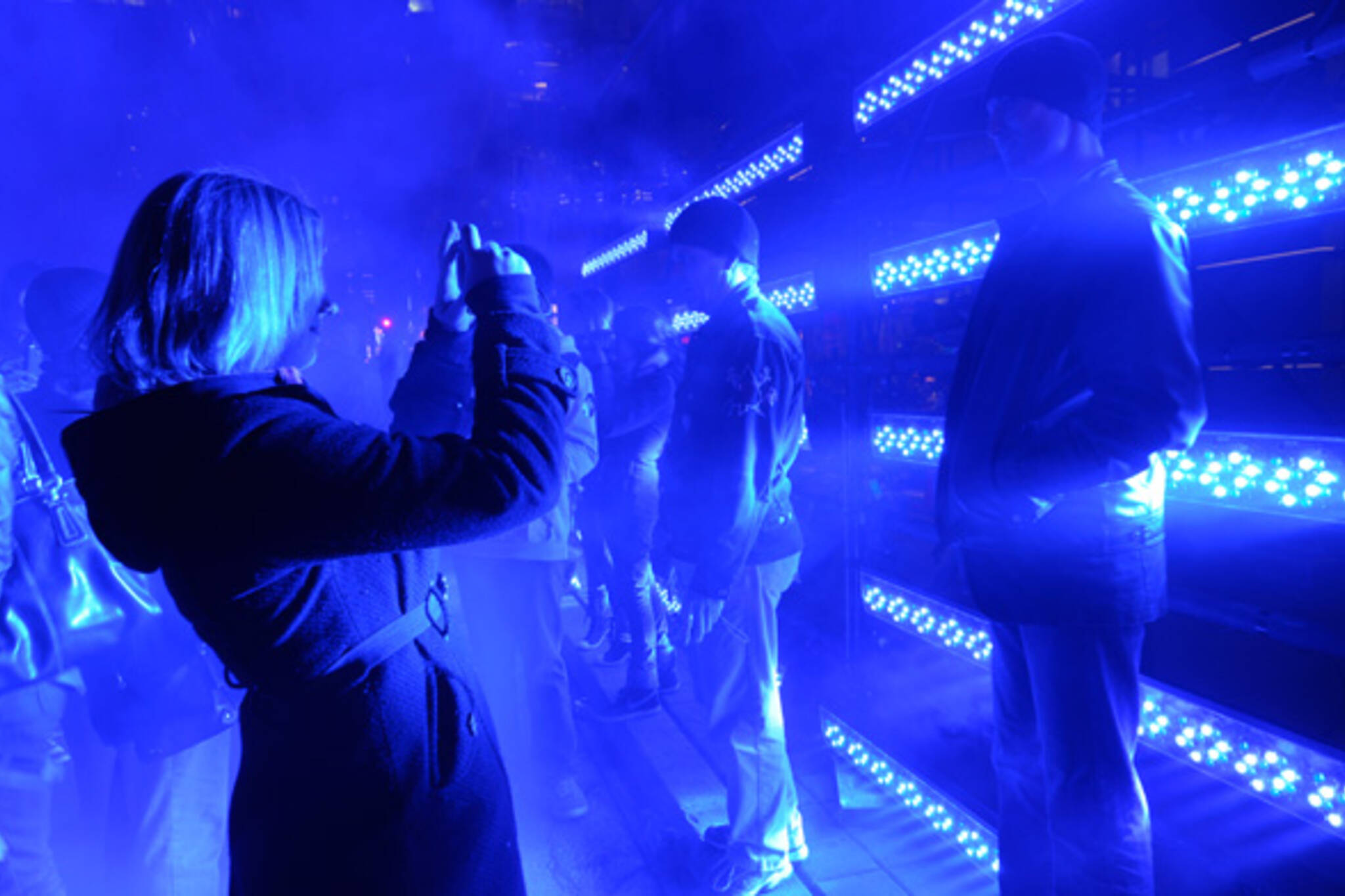
How Toronto landed Nuit Blanche in the first place
It's only been here for 10 years, but already the annual Scotiabank Nuit Blanche art festival has grown from a modest local attempt to emulate a successful European arts festival to an economic and cultural behemoth, drawing hundreds of thousands of visitors to the city each Fall.
In French, the phrase Nuit Blanche means "all nighter," a day when the sun never sets. The first all night art festival of its kind was held in Paris in 2002 and the concept spread to other European cities, including Rome, Brussels, and Berlin, before making the leap to Montreal in 2004.
The brainchild behind Toronto's version of the festival was Rita Davies, the city's then-executive director of culture. She laid the groundwork for the festival under arts-friendly mayor David Miller, giving the city its first large-scale, highly public celebration of the arts. A "free all-night contemporary art thing," according to the first year's promotional material.
"We used to think of London, New York, Paris, Rome, and San Francisco as places that existed in an other realm," she told the Star in 2006. "But now Toronto is much like the cities we once envied--cities that work with their minds."
The first Nuit Blanche, themed "My Secret City," was centred on the Entertainment District, Yorkville, and the Distillery. 55 galleries stayed open from sunset at 7:00 p.m. on Sept. 30 to 7:00 a.m. on Oct. 1. and there were 130 installations dotted throughout the city.
Michael Snow (of the Eaton Centre geese) projected grazing sheep on the dome of the planetarium on Queen's Park, Trinity Community Recreation Centre at Crawford and Adelaide was turned into a Roman bath/nightclub, and parts of the U of T campus were overtaken by an eerie fog.
Elsewhere, at University Settlement House on Grange Ave., 10-year-old DJs spun tunes while adults rested in nap areas surrounded by colourful rubber balls.
In a coin car wash Queen West there was an ice sculpture tribute to Neil Stonechild, a Cree First Nations teen who died of hypothermia in 1990 after allegedly being abandoned in a field by Saskatoon police when the temperature was in the -20s. His name was spelled in melting blocks of ice.
Despite unseasonably cold weather and some rain, several thousand people wandered the streets until dawn, soaking in the artwork.
"It was like Halloween for 端ber-chic twenty-somethings," wrote Star entertainment reporter Jen Gerson. "Some of it had a message: memorializing the dead, praying for peace, or giving a glimpse into the Hungarian Revolution. Other art was just too weird to classify: traveling beds, makeshift sandboxes, and lyrics spelled out in neon."
Today, Toronto's Nuit Blanche is among the largest and most successful events of its kind in the world. A minimum of a million people have attended every year since 2008, some 200,000 of them from out of town in 2014, according to figures published by the Globe and Mail. The economic impact on the city is somewhere in the region of $41 million.
Proof that Toronto really does like to stay up all night.
Follow Chris Bateman on Twitter at @chrisbateman.
Image: /blogTO Flickr pool.
Latest Videos
Latest Videos
Join the conversation Load comments







